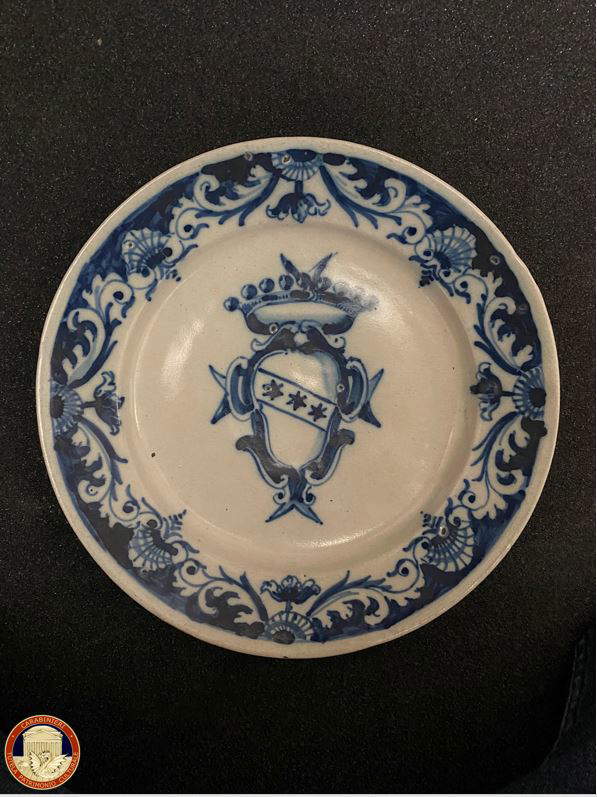A three-year international investigation, coordinated by the Public Prosecutor’s Office at the Court of Florence and conducted by the Carabinieri Nucleo Tutela Patrimonio Culturale in Florence in cooperation with theFBI, has led to the recovery of more than 600 stolen works of art, including valuable ancient books, ceramics and paintings, some of great historical and artistic significance.
The investigation stems from a complaint filed in 2021 by a Florentine citizen who reported the theft of a valuable book work, Leonhart Fuchs’ De Historia Stirpium Commentarii Isignes, a botanical treatise from 1542. The book had been stolen from its home between 2018 and 2019 and spotted a year later on the website of a Florentine auction house. The work, seized from a Veneto antiquarian who was a bona fide buyer, triggered an elaborate investigation that uncovered extensive trafficking in cultural property.
The recovery of the book led law enforcement to a broader investigation, implicating 12 people and leading to the execution of as many searches. The works were kept in luxurious Florentine aristocratic residences and were systematically stolen by one of the suspects, a craftsman who was assigned to do minor maintenance work in the homes of Florence’s nobility. The goods were then sold on the antiques market, both domestically and abroad, concealing their illegal provenance. The investigation revealed that some works had been exported and sold to unsuspecting collectors in countries such as the United States, the United Arab Emirates, and the United Kingdom.
The investigation resulted in the seizure of a massive stolen cultural heritage, which included numerous books and art objects. Among the assets were four ceramic plates made by Manifattura Ginori for the Presidency of the Italian Republic; a Meissen porcelain service from 1820 decorated in pure gold; a Ming dynasty, Kangxi period, plate from the late 17th century; a painting depicting an ox, with the signature of Giovanni Fattori; and a rare volume, De Honesta Disciplina, with Giorgio Vasari’s autograph signature.






The investigation required the international cooperation of multiple agencies, including the FBI and INTERPOL, which helped track down the works abroad and facilitate their return to Italy. In some cases, the assets had been acquired in good faith from private collectors, necessitating extrajudicial action to recover them. A key element of the investigative success was the discovery of a ledger detailing the accounting of the stolen and sold works, allowing the quantification of an illicit turnover exceeding 300,000 euros. If placed on the market, the goods could have generated profits of more than 3 million euros.
The result obtained represents a concrete example of how the synergy between the judiciary, law enforcement and cultural institutions can contribute decisively to the protection of artistic heritage. The collaboration of the Ministry of Culture, together with the territorial ramifications and the commitment of the Carabinieri Nucleo Tutela Patrimonio Culturale, made it possible to preserve and recover assets of great historical and cultural value, preventing them from being dispersed or forgotten.
Also crucial was the initiative of the citizen who, with his complaint, started an investigative chain that led to the discovery of a vast criminal ring. The commitment to the protection of cultural heritage is a mission of not only national, but global significance, as demonstrated by the collaboration between Italy and international agencies.
The recovered works, which will now return to the availability of their rightful owners, represent a unique heritage not only for their economic value, but above all for their contribution to the history of Italian art and culture. Every single piece tells a part of our history, from the plates carefully decorated by the ancient Ginori manufactures to the manuscripts signed by great masters such as Giorgio Vasari.
 |
| He broke into noblemen's homes to do chores and stole artwork: carabinieri recover 600 assets |
Warning: the translation into English of the original Italian article was created using automatic tools. We undertake to review all articles, but we do not guarantee the total absence of inaccuracies in the translation due to the program. You can find the original by clicking on the ITA button. If you find any mistake,please contact us.